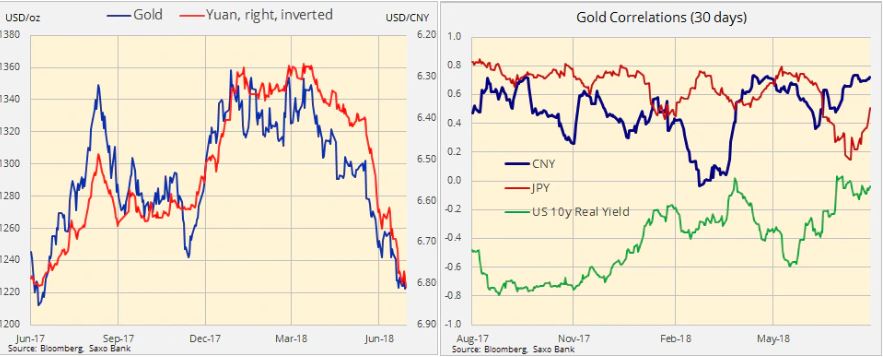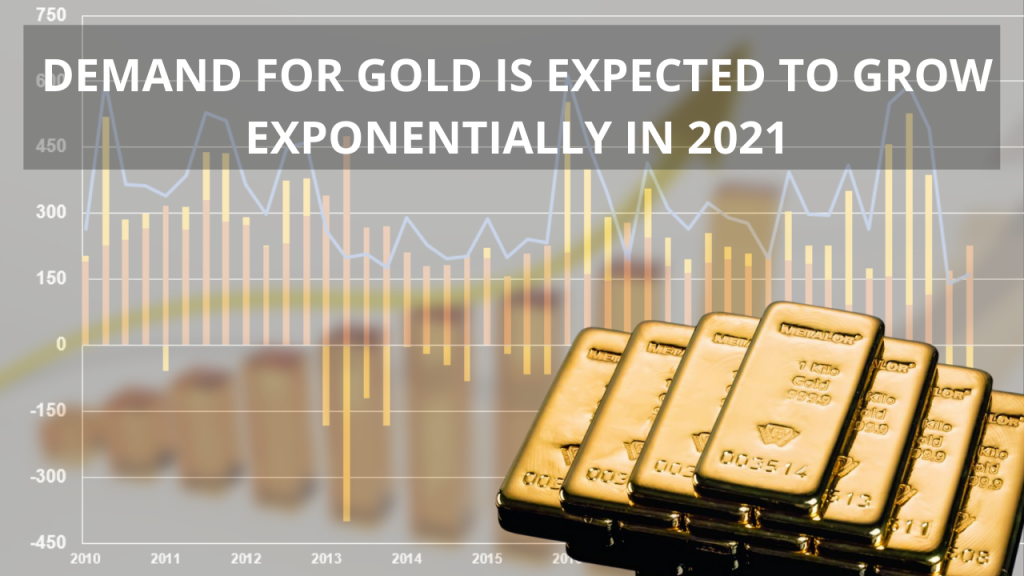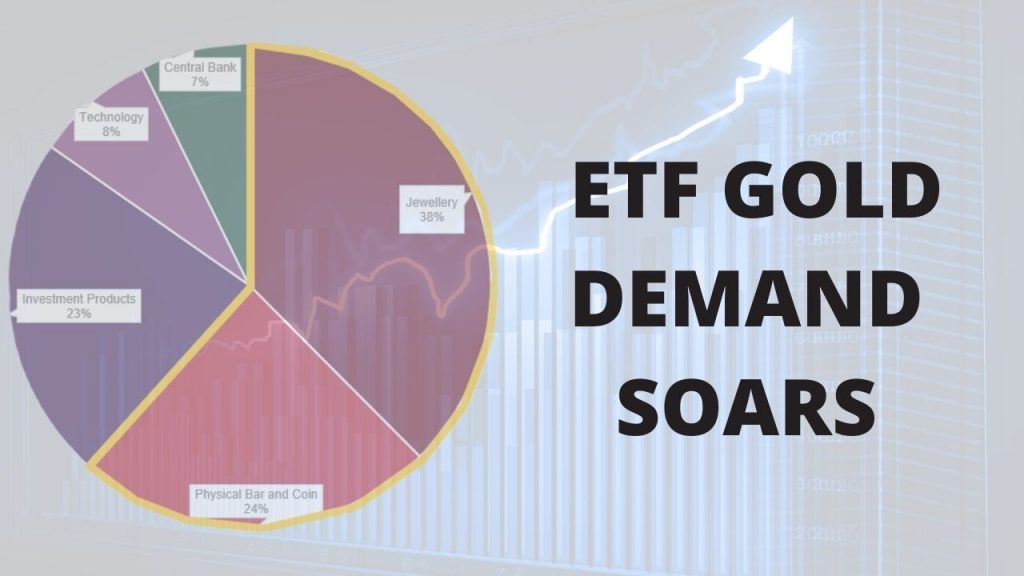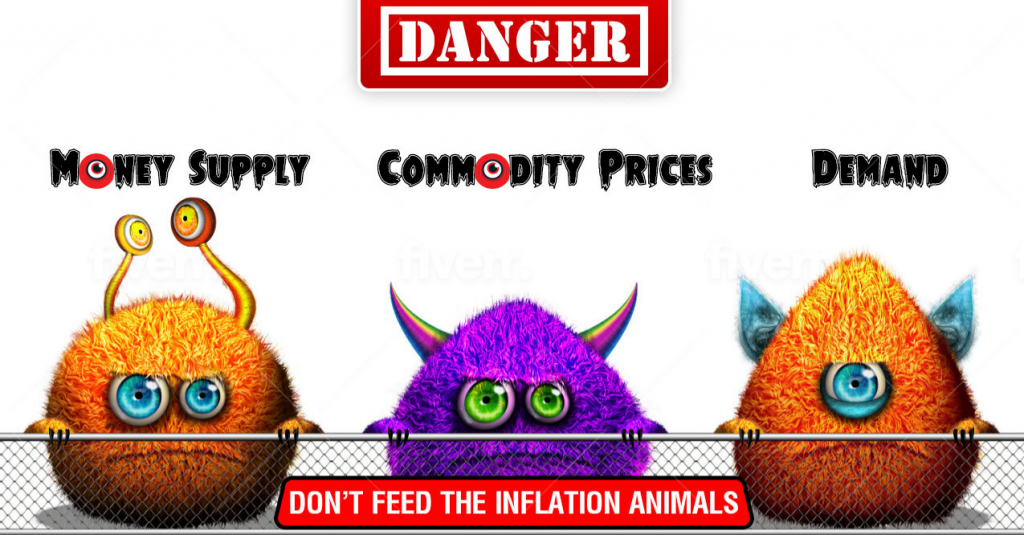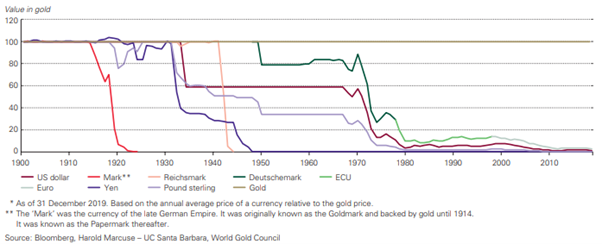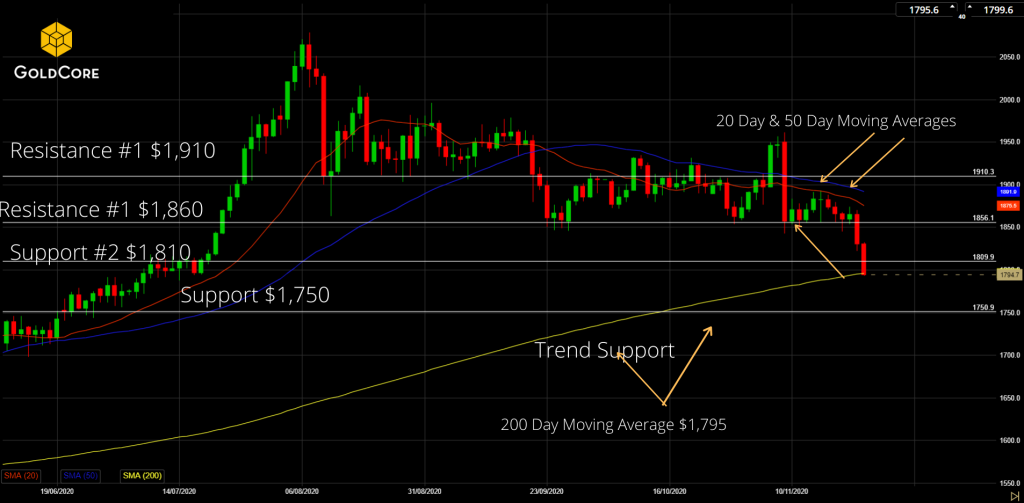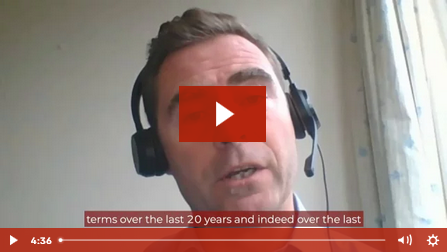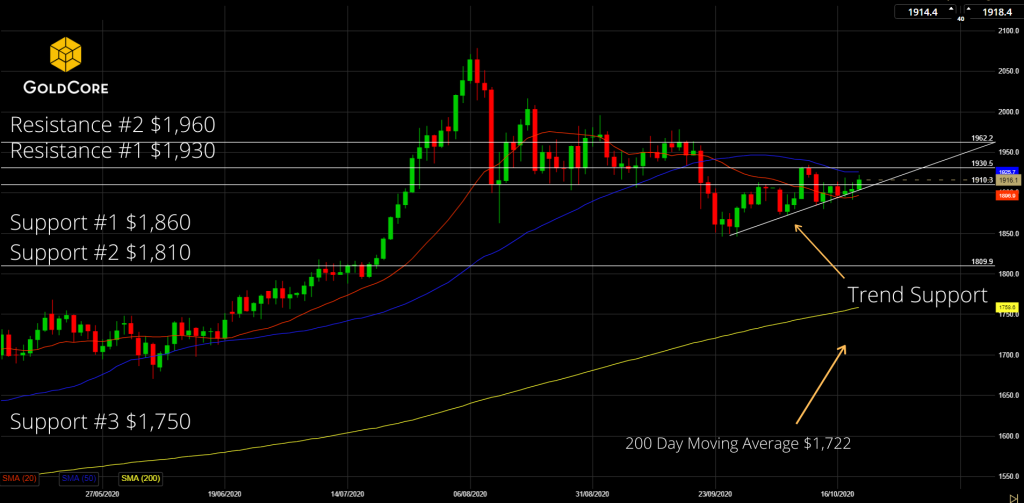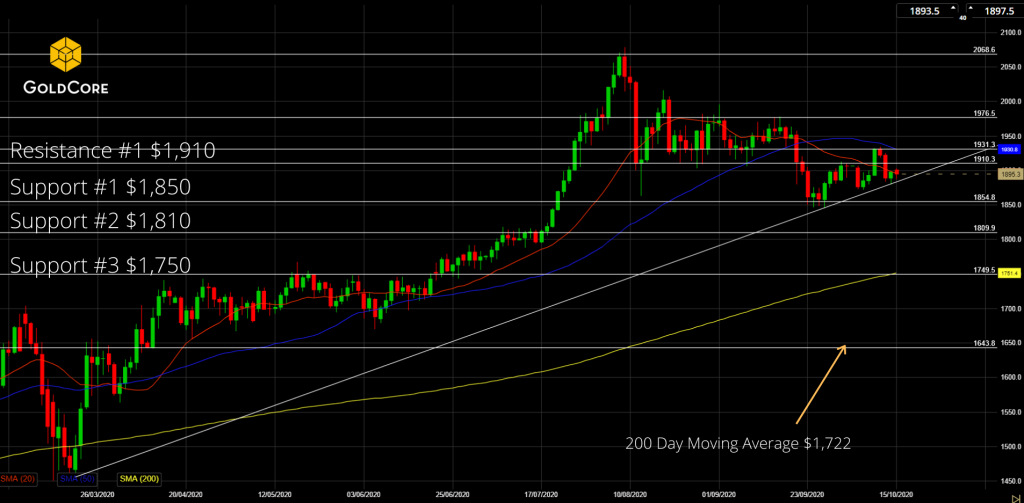| By: Rachel Koning Beals – News Editor Marketwatch
Gold’s sharp decline over the past month serves as little surprise to the investors who want the asset to perform in just this fashion—that is, as an alternative to assets perceived as risky, like stocks. They’re betting that the opposite will be true as well, that gold will resume its role as protector and diversifier, even inflation hedge, when what they see as bloated price-to-earnings ratios, heavy debt-to-GDP ratios among major economies and hints of higher inflation finally catch up to the stock market. “Sure, the opportunity cost of holding gold given where stocks are isn’t great, but the long-term reasons to own gold are just as real as they were months ago, as a store of value with low correlation to stocks,” said Adam Strauss, CFA, with Appleseed Capital. |
|
| For now, gold bulls have had to watch with some anxiety as gold prices GCQ8, +0.51% GCZ8, +0.48% plunged last month to their lowest level in nearly a year—notching a settlement as low as $1,224 an ounce at one point, and even grazing a $1,210 low in intraday action, in the futures market. That settlement marked gold’s entry into correction territory, or down more than 10% from its peak on Jan. 15 at $1,362.90. Gold futures have now fallen on a weekly basis for three weeks in a row.
Neither stocks nor gold have strictly followed the presumed rules in recent weeks as the threat of a full-scale trade war took root as the U.S. threatened to enact tariffs against China and the European Union and these trading partners responded in kind. Risk-on markets barely registered alarm; the S&P 500 index SPX, +0.35% has gained 3.6% so far in July. And gold, often serving as even a short-term haven stash when geopolitical and global economic worries flare, was largely ignored for this use; it’s on track to shed 2.5% this month and is down about 6.6% in 2018 to date. True, the stock-gold inverse relationship held, just not as expected. |
Gold Chart for August |
| However, there is another inverse relationship that is played out much as expected and that too restores gold holders’ confidence that the metal’s descent isn’t all that worrying. The trade-war worries elevated the U.S. dollar to haven status among currencies, markedly against China’s yuan CNYUSD, +0.3896% (see the following chart). A stronger dollar can make commodities priced in the currency, such as gold, more expensive to investors using other monetary units, thus cutting demand for gold.
After declining by 9.8% during 2017, for the steepest annual fall since 2001, the ICE dollar index DXY, -0.26% again started the year on the back foot. But since a mid-April nadir, the DXY, as the gauge is sometimes referred, has rallied by about 6%. Gold’s near-term fate may remain tied to the dollar, but there is little shock or surprise in that. Part of gold’s drop has been because of a tainted association to commodities in general, a relationship that will presumably mean less to investors if and when they’re spooked back toward the shelter of the yellow metal if stocks retreat. “While gold’s commodity function (jewelry) is not central to our monetary investment thesis, the fact remains that gold is a key component of most commodity indices. In fact, gold is currently the single largest weighting in the Bloomberg Commodity Index, at 9.32%. In the very short run, therefore, gold is not immune to the magnetic pull of displacements in the commodity complex,” said Trey Reik, senior portfolio manager with Sprott Asset Management. |
Gold, CNY/USD, Jun 2017 - 2018 |
He points to July 11, a particularly sharp daily drop for copper prices and even steeper declines for the Bloomberg Commodity Index since 2014. Base metals broadly fell 3%-plus that day, when gold comparatively fell a little more than 1%, a gap that “serves as a testament to gold’s non-correlating profile,” he said.
“We view gold’s early summer performance as incremental evidence of bullion’s true portfolio utility,” Reik said. “Gold is not a magical elixir, but it is a fiercely reliable store of value.”
Reik is worried about the durability of what he sees as buyback-fueled stock rally of relatively narrow breadth.
“While imbalances and fragilities continue to mount in traditional asset markets, gold’s portfolio insurance value is being priced remarkably cheaply,” said Reik. “This is frequently a signal that market dynamics are about to change.”
Peter Hug, global trading director with Kitco Metals, is watching exchange-traded fund interest, including in the popular gold-tracker SPDR Gold Shares GLD, +0.66%
“Inflow into ETFs have begun to accelerate,” said Hug in a recent commentary. “This is the vehicle used primarily by fund managers, and either they believe gold is cheap at $1,225 or they are becoming increasingly concerned of a ‘tipping’ event on the near-term horizon.”
“Technically, we would like to see gold break above the $1,237 level. We’ll leave a little on the table until we get this confirmation,” he said. Conversely, downside support remains at $1,220, said Hug, and gold remains vulnerable to a test of this marker.
Saxo’s Hansen also has an eye on $1,220, which represents a 50% retracement of the significant $329-per-ounce rally logged between December 2015 and July 2016.
“For this level to hold, however, it is clear that the dollar appreciation needs to pause or reverse, especially against the yuan,” said Hansen.
Appleseed’s Strauss believes stocks and their relative value justify diversification that includes gold. The S&P 500 has an overall P/E ratio, based on the past 12 months, of 24.9, according to S&P Global Inc. The average of the trailing P/E ratio of the index going back to 1960 is 19.2.
And some of the metal’s fate, though not its longer-term durability, resides with the rate-hiking Federal Reserve and Treasury yields TMUBMUSD10Y, +0.35% Higher rates in bonds lure demand away from haven gold, although that is only when higher yields offer enough compensation for inflation.
“The common fix for out-of-control debt/GDP ratios [in major economies] is to ‘inflate’ your way out of it,” Strauss said. “Consider that and the fact that while nominal interest rates are rising, real interest rates, when higher inflation is factored in, are still largely negative. That’s an environment in which gold has historically performed well.”
Trump Trade and Currency Wars With China – Goldnomics Podcast |
Full story here Are you the author? Previous post See more for Next post
Tags: Daily Market Update,newslettersent











